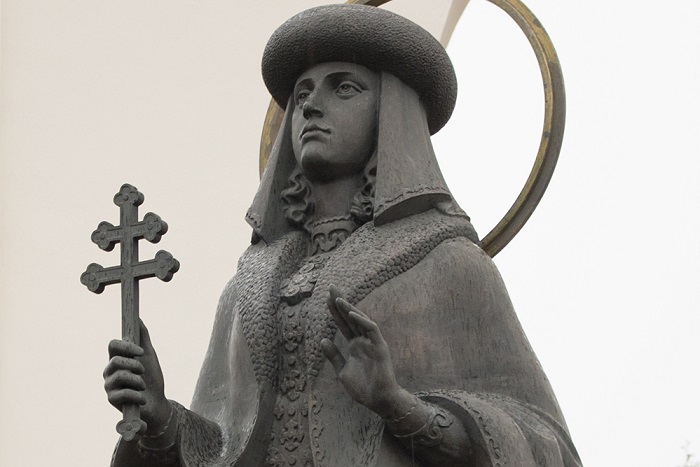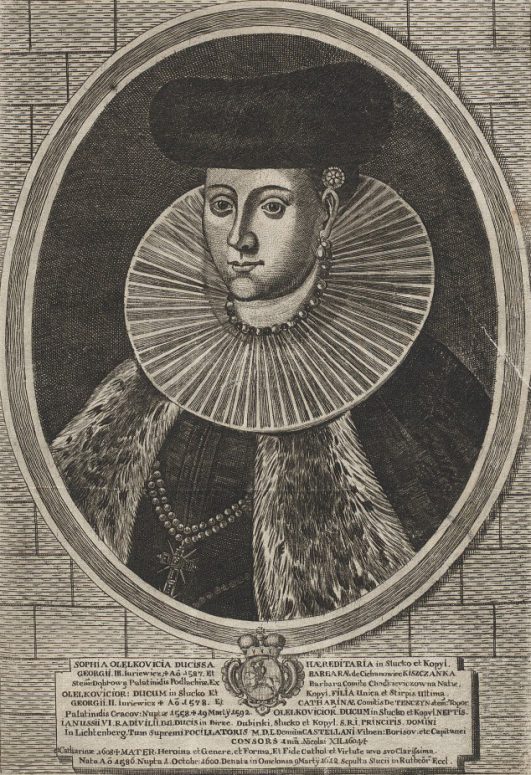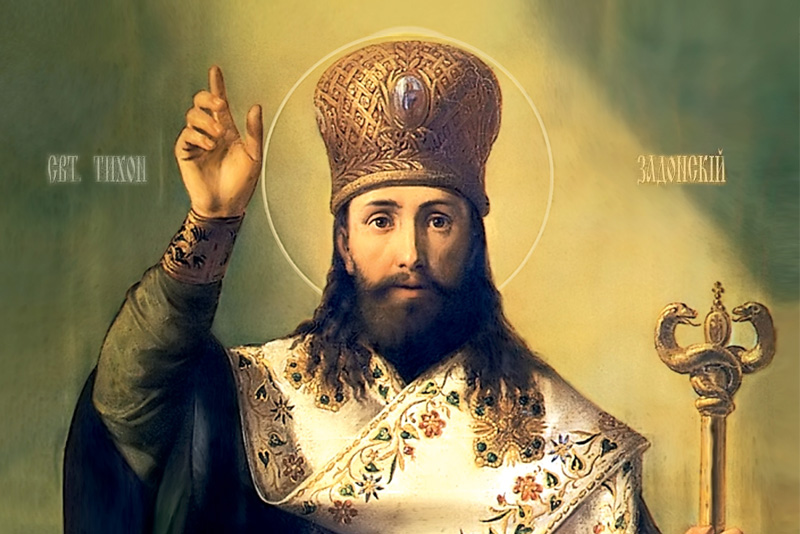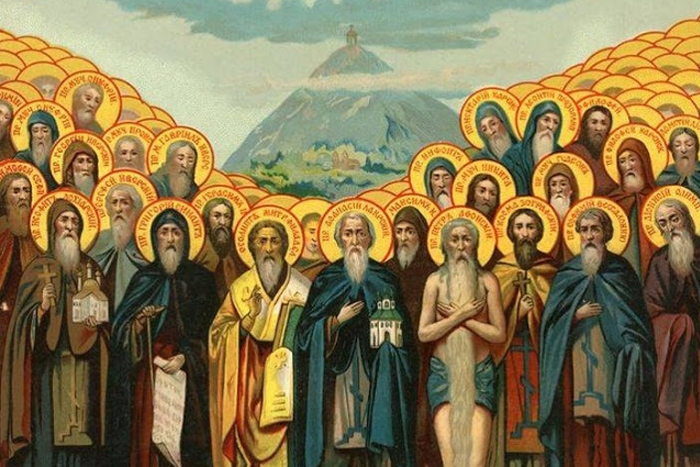
When I was traveling in Eastern Poland, local Orthodox believers told me about their church traditions dating back centuries, which other places have long lost. It was thanks to the Holy Righteous Princess Sophia of Slutsk that the Union never took root in her fiefdom.
Saint Sophia lived in a time when the Orthodox faith in Belarus was almost forbidden and brutally persecuted by secular and ecclesiastical authorities. As soon as the Union of 1596 was declared, the authorities began forcibly taking away monasteries, churches, and church property from the Orthodox and giving it to the Uniates. They would expel those priests who opposed the Union. They arrested, slandered, and imprisoned the most adamant Orthodox leaders. Orthodox priests were prohibited to walk with the Holy Gifts openly on the streets. The authorities required Orthodox priests to take money for rituals and Sacraments such as baptisms, weddings, or burials. The Orthodox could no longer have public funerals; they had to bury their dead under cover of night. The authorities used all their coercion and all their tricks to make the Orthodox become Uniates. Almost all noble benefactors withdrew their support of the Orthodox faith. The remaining Orthodox churches were derisively nicknamed ‘synagogues’, and the Orthodox Christians were called ‘schismatics’ and ‘heretics’. It was in this religiously intolerant environment that Princess Sophia became the champion and defender of the persecuted Orthodox faith in Slutsk lands.

Sophia Olelkovich of Slutsk belonged to a noble Orthodox family, which counted Holy Prince Vladimir who had baptized Russia among its ancestors. Her grandfather, Yury II (1532–1578) wrote in his will, “On pain of my fatherly curse, children must always stay faithful to the Orthodoxy. If they trespass my will, they lose right to their inheritance.” Sadly, only St. Sophia’s father remained Orthodox;her uncles converted to Catholicism. Her father, Prince Yury III Olelkovich, copied the entire Holy Gospel by hand and presented it to Slutsk Holy Trinity Monastery.
Her parents died when she was young, and she was raised by her maternal relatives, the Chodkiewicz. The Chodkiewicz family made lavish contributions to churches. They were an old Orthodox family, a few members of which had by that time become Catholic. The 1631 list of benefactors’ names of Supraśl Monastery, which was founded by their ancestors, includes names of Princes Olelkovich, and Sophia among them. The Chodkiewiczes raised Sophia along with their own children, provided her with a good education, and taught her the faith of her ancestors.
When Saint Sophia was a baby yet, she turned out to be the richest bride in the Polish–Lithuanian Commonwealth. Aside from the property she inherited from her father, she also inherited property of her uncles who died childless.
Her dowry attracted attention of the richest families of the Grand Duchy, including Krzysztof Radziwiłł. Yury Chodkiewicz had huge debts to the Radziwiłł family. He married Krzysztof’s niece and promised to marry the Princess of Slutsk to Prince Janusz, Krzysztof’s son, under the condition that the Princess explicitly agrees to marry him when she is old enough. Later, the two noble families broke up but finally, the marriage happened in the fall of 1600.
Thanks to her tenacity, her husband’s goodwill, and possibly the terms of their marriage contract, Princess Sophia of Slutsk remained faithful to her ancestors’ faith. There is a number of papers that prove her refusal to convert to Catholicism and to marry in a Catholic church and her unwavering demand to baptize her future children in an Orthodox church, although heirs usually adopted the father’s faith.
In spite of the fact that their marriage was somewhat arranged, the future saint appreciated her husband’s care and love. She mentioned “His Mercy’s loving attitude to his spouse, and his benevolent care for her health, and all the good that he has done to me.”* On the other hand, Sophia also had a lot of influence on her husband. He respected her views and took her opinion into account.
In keeping with what we have mentioned so far, Sophia, backed by her husband, made a lot of donations and committed herself to charitable activities. There are documents in the archives that contain information about the couple’s contributions to existing churches and endowments to build new ones. The Radziwiłł couple supported Holy Transfiguration Fraternity in Slutsk, which had been established by Prince Yury III In 1586. The Fraternity ran a hospital, a printing press, and a school.
The Princess embroidered priestly vestments with her own hands, using gold and silver threads. The vestments she gave as gifts to various churches remained there until the 20th century.

The princess persuaded her husband to solicit a royal charter that would ban the Catholic agents from converting the residents of their lands into the Union against their will. It was especially valuable at the time when the national culture, language, and the Orthodox faith were being superseded by Polish culture and Catholic faith. Thanks to the couple’s activity, Holy Trinity Monastery in Slutsk, which had previously been occupied by the Uniates, returned to the Orthodoxy. That was how Slutsk, with its fifteen churches, remained the only town in the Grand Duchy of Lithuania that was independent from Rome – the sole stronghold of the Orthodox faith in the country. Eventually, all Uniates left the principality.
Thanks to the efforts and the influence of Janusz Radziwiłł, Constitutional Acts of 1607 and 1609 recognized the Orthodox Church and allowed its incorporation.
God only knows why so many hardships befell the Princess’ family: her first two babies died in their infancy, and the Princess herself died during her third childbirth. She was about to turn 26 by that time. Her newborn girl outlived her for less than a day. The general reason for frequent health issues of noble families is said to be their close-kinship marriages. After his spouse died, Prince Radziwiłł continued to support Orthodoxy in his lands. He built some more churches.
Meanwhile, Slutsk residents witnessed miracles from the Princess’ grave. She was venerated as a patroness of sick women, especially those in labor; children; godly marriages; as a intercessor for people who have lawsuits with the government, and as a peacemaker.
There are numerous testimonies and accounts of miracles that occurred thanks to the saint’s prayer. For example, there was a cholera outbreak in Slutsk in 1848. The residents organized a procession with the incorruptible relics of Saint Sophia crosswise to all four ends of the town. They had molebens in each of the four ends. Soon thereafter, the outbreak stopped.
Following a petition submitted by the Most Rev. Philaret, Metropolitan of Minsk and Byelorussia, Patriarch Poemen of Moscow blessed adding Holy Righteous Sophia of Slutsk to the Synaxis of Belarusian Saints on April 3, 1984. Her relics now rest in Holy Spirit Cathedral in Minsk. Her commemoration day is April 1.
*(Extract from the register of the Commission on the Interests of Radziwiłł Family. 1825, March 6. Archiwum Główne Akt Dawnych w Warszawie, Archiwum Radziwiłłowskie, teka 116, plik 2, k. 118-128)
** (Józef Ignacy Kraszewski. The Last of Slutsk Princesses. p. 36)



